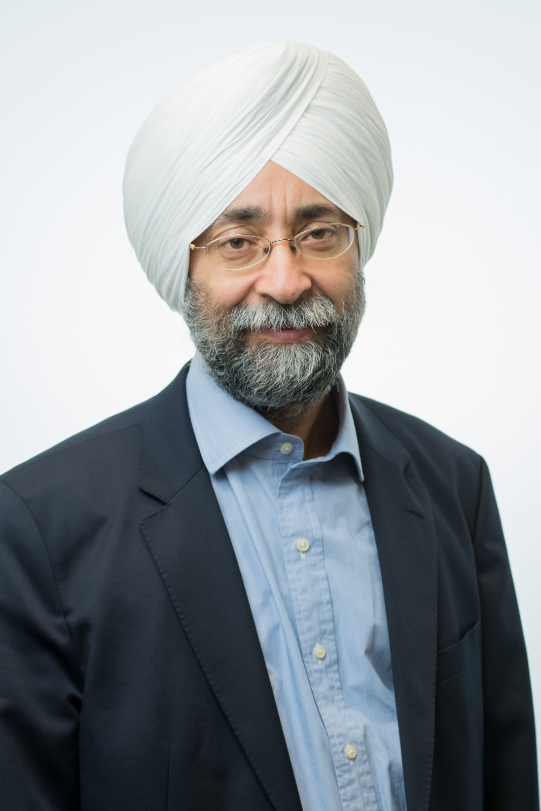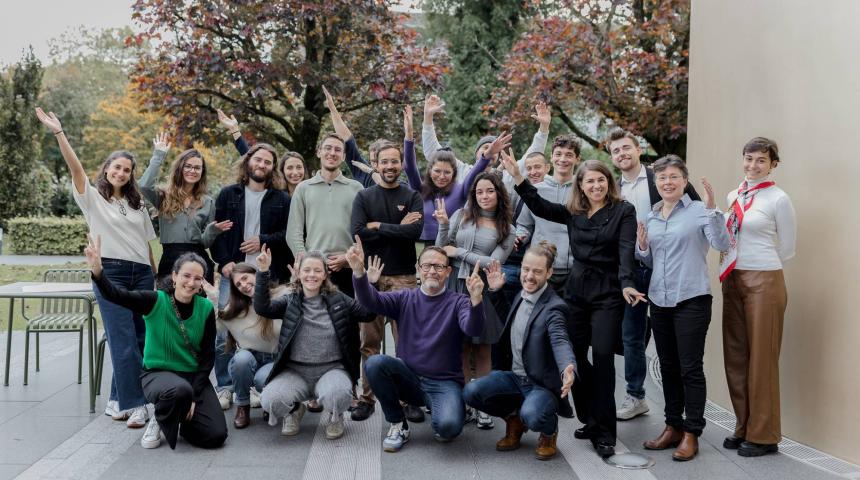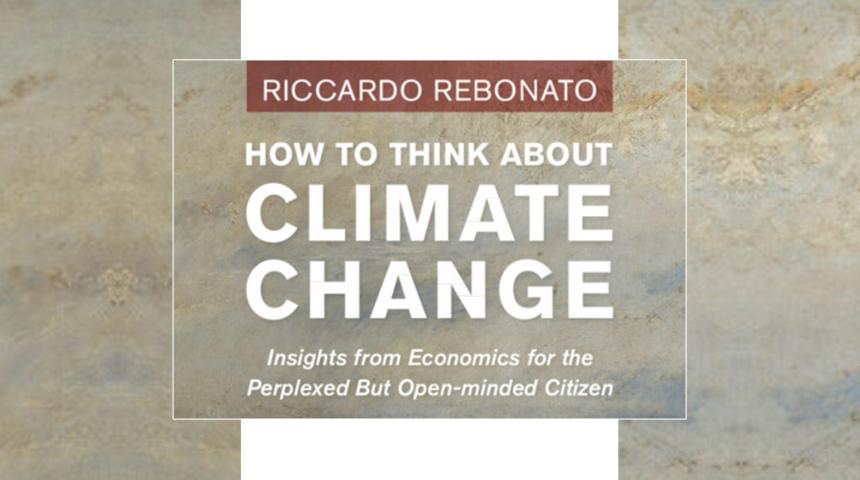Raman Uppal
"The best thing about the students on the PhD programme is their strong motivation and also their desire to answer big questions that are interesting not just to the academic community, but also to the business community. The students are mature and motivated, making it easy to teach in class and to work with them on research outside the classroom"

"I was amazed to see how many top scholars from around the world were teaching in it. And, I was also very impressed by the students in this programme, many of whom are very senior executives at top financial institutions and corporations.
The best thing about the students on the PhD programme is their strong motivation and also their desire to answer big questions that are interesting not just to the academic community, but also to the business community. The students are mature and motivated, making it easy to teach in class and to work with them on research outside the classroom"
Since you joined EDHEC in 2011, you have taught in two programmes: MSc Risk and Finance and the PhD programme. Both programmes have students who are working in industry. In what way has this changed your way of teaching and enriched your experience as a teacher?
Both the MSc programme and the PhD programme that I teach in share a common feature: the students in both of these programmes are working in full-time jobs and are attending courses only on a part-time basis. But, the two courses are also different in two important ways: the students in the PhD programme are older – typically in their late thirties or early forties – with much more work experience and also stronger quantitative skills.
As both the MSc and PhD students are studying on a part-time basis, I have redesigned my courses so that I can cover a fair amount of material during the short period of time that the students are present in school. In particular, the courses have been redesigned to emphasise that there is a very structured way of thinking about all of the material in the area of capital markets and asset valuation. While in a traditional course an instructor may mention that there are several topics that are covered when studying capital markets, in my course I highlight that there is only a single idea that is the foundation for all of the ideas studied in capital markets and valuation. This single idea is the concept of no arbitrage or replication. I then use this single idea to provide a unifying theme for all the topics that I cover in the course. The main advantage of having a single unifying theme is that it allows the students to focus on learning a single key idea and its broad implications, as opposed to learning lots of different ideas, with the connections between these ideas not being completely clear.
But, because the students in the MSc programme are younger with less experience, in the course for these students the material is less technical and more applied. To make the material less technical, I spend a lot of time teaching the material using two-date and multi-date models set in discrete time; in contrast, most of the time in the PhD course is spent on studying these topics in a continuous-time setting. In order to make the courses more applied for the MSc students, each day the students work on two cases. These cases give students the opportunity to apply the knowledge acquired in class to real-world problems. In contrast, for the course taught to PhD students, I do not use any cases at all because the PhD students already have a substantial amount of work experience. Instead, I draw on their work experience to link the theory taught in class to the problems they are working on in their jobs.
What are your current research interests and how do they relate to your teaching? Are you communicating these ideas to students?
In my research, I answer three questions.
First, why do investors choose to invest in a particular way? For example, data shows that the median number of stocks in which a typical household invests is only three – clearly too few stocks to have a portfolio that is well diversified. Or, why do investors hold portfolios that are biased toward domestic stocks, rather than diversifying internationally?
Second, how should investors choose their portfolios? That is, how should investors design portfolios in light of the various imperfections that are present in the real world? For example, how should investors design portfolios in the presence of transaction costs and taxes, or how should investors choose portfolios when they have limited experience in assessing the risk and return of new asset classes such as private equity, or how should investors trade when the market is populated with not just investors who are fully rational, but also investors who trade on sentiment?
Third, I study the general equilibrium implications of the decisions made by investors. For example, if households invest in only three assets on average, how does this affect the risk-free interest rate and the equity risk premium and also what are the implications on macroeconomic quantities such as aggregate investment and the economy-wide growth rate? Or, as more and more investors in private equity acquire experience, what is the effect on the liquidity premium?
Teaching and research are very closely-related activities. In many ways, teaching drives research. For instance, while thinking about the material I will be teaching in the course, I identify gaps in the literature which provide avenues for future research. Frequently, students ask questions based on their own work experience that highlight gaps in existing research and these questions are the motivation for future research. And, the research one does is often reflected in the material that one teaches. For example, I am currently working on very fundamental research about the design of portfolios in the presence of pricing errors and model misspecification (often referred to as “alpha” in the industry). This is a very important area for investment professionals and I intend to include this material in future courses that I teach, especially courses designed for practitioners.
Can you elaborate on a few recent working papers that illustrate this connection of your research to business and society?
The first paper I will describe is titled “`Does Household Finance Matter? Small Financial Errors with Large Social Costs”, and it is co-authored with Harjoat Bhamra, a former PhD student who I supervised at London Business School. In this paper, we study the implications for households of investing in only a few stocks, which creates two kinds of inefficiencies: under-diversification and under-investment in risky assets. To understand their implications for growth and social welfare, we solve in closed form a model of a stochastic, dynamic, general-equilibrium economy with a large number of heterogeneous firms and households, who bias their investment toward a few familiar assets. Consistent with the existing literature, we find that the loss from holding a biased, and hence, under-diversified portfolio is modest. The first new insight is that this small loss from lack of diversification is amplified because it increases household consumption-growth volatility. The second new insight is that these effects at the individual-household level are magnified further in general equilibrium through their effects on aggregate investment and growth; that is, there is a negative externality. Our results show that financial markets are not a mere sideshow to the real economy and that financial literacy, financial regulation and financial innovation that improve the portfolio choices of households can have a significant positive impact on social welfare. The analysis in this paper is undertaken in continuous time and the model is thus a very nice application of the material that I teach in the PhD course on Continuous Time Financial Economics.
A second paper is titled “Where Experience Matters: Asset Allocation and Asset Pricing with Opaque and Illiquid Assets”, which is co-authored with Adrian Buss (INSEAD) and Grigory Vilkov (Frankfurt School of Finance and Management). The motivation of this paper is to understand how to invest in alternative assets, such as private equity, hedge funds and real assets, which are illiquid and opaque, and thus pose a challenge to traditional models of asset allocation. In this paper, we study asset allocation and asset pricing in a general-equilibrium model with traditional liquid assets, such as equity in large firms, and an alternative risky asset, which is opaque and incurs transaction costs. In our model, we also consider two kinds of investors who differ in their experience in assessing the alternative asset. We find that the optimal asset-allocation strategy of the relatively inexperienced investors is to initially tilt their portfolio away from the alternative asset and to hold more of it with experience. Counter-intuitively, a decrease in the transaction cost for the alternative asset increases the portfolio tilt at the initial date, and hence, the liquidity discount. Transaction costs may induce inexperienced investors to hold a majority of the illiquid asset at later dates, even if they are pessimistic about future pay-offs, and produce a sizable liquidity discount. During periods when the alternative asset is illiquid, investors trade the liquid equity index instead, leading to strong spillover effects from the alternative asset into the market for the liquid asset. In this paper, markets are incomplete because of the transaction costs. This is in contrast to the material covered in the PhD course on Continuous Time Financial Economics, where financial markets are assumed to be complete. Thus, this paper illustrates how the course material can be extended to incomplete-market settings with multiple investors who have different beliefs (because of differences in experience).
Did you have apprehensions about associating with a programme that is open to professionals and what is your experience to date?
When I first heard of a PhD in finance for executives, I had some misgivings and I wondered how this kind of programme actually worked. But, after working at EDHEC for five years, I have been impressed by how many top scholars from the world are teaching the elective courses in this programme. And, I have been excited by the large number of students on this programme, many of whom are senior executives at top financial institutions and corporations.
My experiences to date have been largely positive. The best thing about the students on the PhD programme is their strong motivation and also their desire to answer big questions that are interesting not just to the academic community, but also to the business community. The students are mature and motivated, making it easy to teach in class and to work with them on research outside the classroom. The only challenging aspect of the PhD programme is that many students have great demands on their time – from their work and from their families – and therefore find it difficult to devote sufficient time to the programme.
What does your PhD course cover and what do you emphasise?
The course I teach covers material on continuous time finance.
The course can be divided into four parts. The first part of the course introduces students to the main concepts of modern finance, the principle of no arbitrage and the stochastic discount factor, and the mathematics for continuous time finance – Itô calculus. The second part of the course shows how these concepts can be applied to the valuation of a large class of derivatives: options on stocks, foreign exchange, forwards, futures and interest rates. This part also covers dynamic models of the term structure of interest rates. The third part of the course covers optimal consumption and portfolio choice models, both in a complete-markets setting, using martingale methods, and in an incomplete-markets setting, using dynamic programming in continuous time. The fourth part of the course covers dynamic asset pricing in equilibrium, where we study both partial equilibrium models, such as the intertemporal capital asset pricing model, and general equilibrium models in exchange and production economies.
The key feature of the course is that it provides a single framework that nests the different areas of finance covered in the course. That is, instead of covering a list of topics, I develop a single framework that can be applied to the wide variety of problems studied in the course.
As an advisor in the PhD programme you have had several experiences. Can you comment on what you perceive as successes and the reasons for them? What are the main obstacles to completing a successful dissertation?
The highlight of teaching in the PhD programme is to see students complete and defend their dissertation successfully. The key to achieving this is to work on the dissertation on a regular basis, devoting at least one or two days each week to the thesis. Conversely, the main obstacle to successful completion of the dissertation is the failure to devote regular time to research. Students who do not work on the thesis each week find it increasingly difficult to resume research work when they return to the dissertation after an interval exceeding a few weeks. For example, a student who does not work on the thesis for one month, needs at least a day to recall what exactly he or she was doing when they stopped working on it. And, if you have only one or two days to spend on the thesis, then spending a day to just recall the details means that progress is exceedingly slow. On the other hand, students who spend more than one day a week on the thesis make steady progress, and typically finish within the allotted two years.
What are your research interests and what are you working on at the moment?
My research focuses on optimal portfolio selection and asset allocation in dynamic environments, the valuation of securities in capital markets, risk management, and exchange rates. In particular, I examine the effects of a variety of market imperfections on the decisions of individual investors, and the resulting effects on prices. For instance, standard models of portfolio selection ignore the effects of transaction costs; in my research, I consider how transaction costs influence the choice of optimal portfolios, and the resulting effect on asset prices.
I am currently interested in answering two questions: first, “How should one manage and invest money?” It turns out that we don’t really have good answers to this basic question. So, a lot of my research is looking at the practical question of how to actually invest money. I did some research where I looked at what academic theory says about managing money, and I found that many models developed in the last fifty years perform very poorly out of sample, and consequently, one might be better off using very simple rules such as investing your money equally across assets.
The second issue that I am studying is the effect of different financial regulations to control stock market volatility. I am looking at regulatory measures such as short-sale constraints, margin constraints, borrowing constraints, and the so-called Tobin tax (a proposed tax on transactions). The traditional models in finance do not allow us to look at these things because it is very hard to solve models in the presence of such constraints. I am trying to understand the effectiveness of these different regulatory measures, and what are the impacts of each measure on other economic variables such as the levels of the stock market and the interest rate.
Did you have apprehensions about associating with a programme that is opened to professionals and what is your experience to date?
When I first heard of a PhD in finance for executives, I had some misgivings and I wondered how this kind of a programme actually worked. But, after investigating the programme more carefully, I was amazed to see how many top scholars from around the world were teaching in it. And, I was also very impressed by the students in this programme, many of whom are very senior executives at top financial institutions and corporations. The students I have met at the workshops I gave so far and those I started advising are extremely smart, very talented, and strongly motivated. Most importantly, they are seeking answers to very interesting questions. For example, one of the students that I am working with is studying the effect of population demographics on portfolio selection and asset pricing, while another is studying how market sentiment affects asset returns, and a third is investigating momentum in stock returns. These topics are of great current interest in the market. I am very much looking forward to teaching in this programme.
What will your course cover and what will you emphasise?
The course covers continuous-time tools for pricing financial derivatives, modelling the term structure of interest rates, and valuing interest-rate-sensitive claims. It also covers optimal consumption and portfolio choices, and dynamic asset pricing in equilibrium. The key feature of my teaching is to provide a single framework that nests the different areas of finance covered in the course. That is, instead of just teaching a list of topics, I provide a framework that shows how the different areas of finance are related to each other, and how the same methods can be applied to a wide variety of problems.
As part of the programme’s doctoral workshop series, you presented working papers that looked at portfolio construction and portfolio theory. Could you tell us more about them?
The last paper I presented is entitled “Improving Portfolio Selection Using Option-Implied Volatility and Skewness”. Our objective in this paper is to examine whether one can use option-implied information to improve the selection of mean-variance portfolios with a large number of stocks, and to document which aspects of option-implied information are most useful for improving out-of-sample portfolio performance. Portfolio performance is measured in terms of four metrics: volatility, Sharpe ratio, certainty-equivalent return, and turnover. Our empirical evidence shows that using each stock’s option-implied volatility in the portfolio construction exercise helps to reduce the volatility of the optimal portfolio, but does not improve its Sharpe ratio or the certainty-equivalent return. We also find that option-implied correlation does not improve any of the metrics. However, expected returns estimated using information in the volatility risk premium and option-implied skewness increase both the Sharpe ratio and certaintyequivalent return substantially, even after prohibiting short-sales and accounting for transaction costs. This means that it is possible to use information in prices of equity options to improve the out-of-sample performance of stock portfolios.
The previous paper was titled “Keynes Meets Markowitz: The Trade-off between Familiarity and Diversification”. There, we develop a model of portfolio choice capable of nesting the views of Keynes, advocating concentration in a few familiar assets, and Markowitz, advocating diversification across all available assets. In the model, the return distributions of risky assets are ambiguous, and investors are averse to this ambiguity. The model allows for different degrees of familiarity for various assets and captures the trade-off between concentration and diversification. It shows that if investors are not familiar about a particular asset, then they hold a diversified portfolio, as advocated by Markowitz. On the other hand, if investors are familiar about a particular asset, they tilt their portfolio toward that asset, while continuing to diversify by holding the other assets in the market. And, if investors are familiar about a particular asset and sufficiently ambiguous about all other assets, then they hold only the familiar asset, as Keynes would have advocated. Finally, if investors are sufficiently ambiguous about all risky assets, then they will not participate at all in the equity market. The model shows that even when the number of assets available for investment is very large, investors continue to hold familiar assets, and an increase in correlation between familiar assets and the rest of the market leads to an increase in the allocation to familiar assets, as we observe empirically during periods of financial crises. We also show how beta and the risk premium of stocks can depend on both systematic and unsystematic volatility. Our model predicts also that, when the aggregate level of ambiguity in the economy is large, investors increase concentration in the assets with which they are more familiar, even if these happen to be assets with a higher risk or lower expected return. Thus, the paper provides a simple model that can explain successfully a variety of observations regarding the portfolios held by individual investors.
Would you have recommendations for doctoral students?
I have only one piece of advice for doctoral students: be ambitious in the questions that you ask, and then pursue the answers to these questions with tenacity and persistence. Good research requires one to ask important questions and to provide deep answers to these questions.



